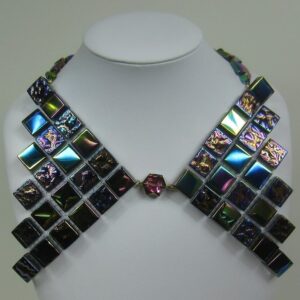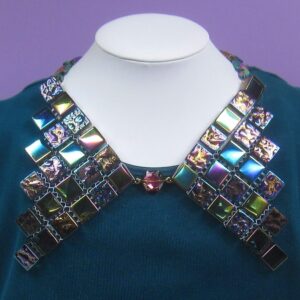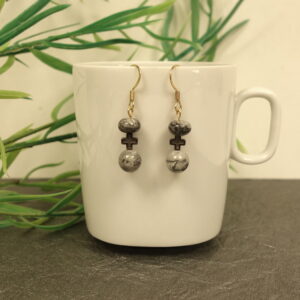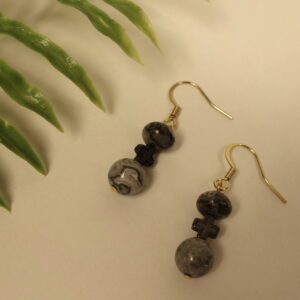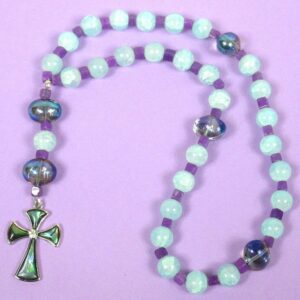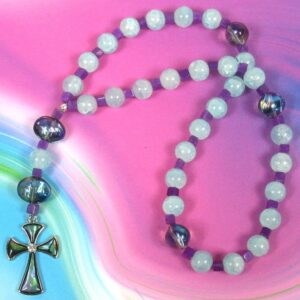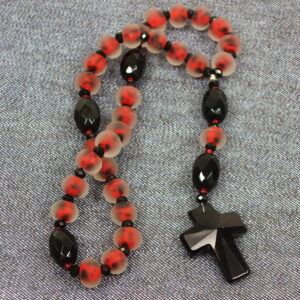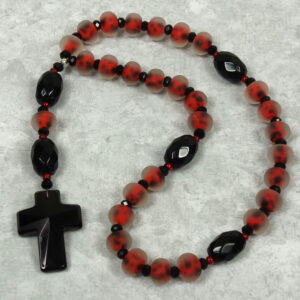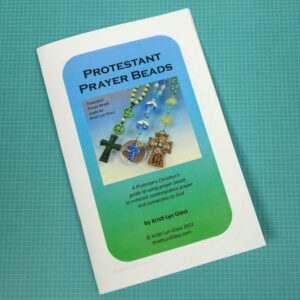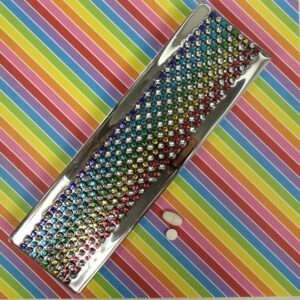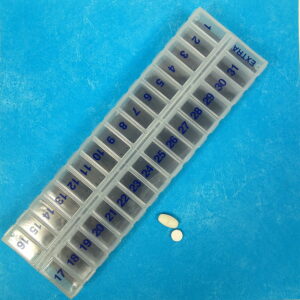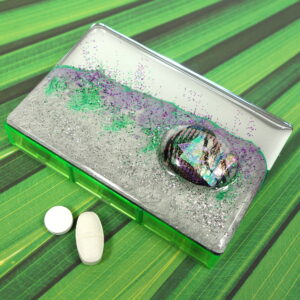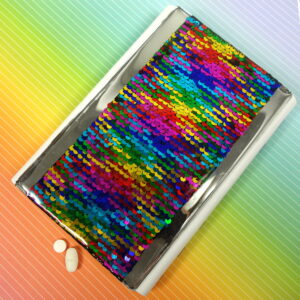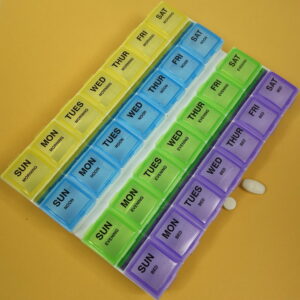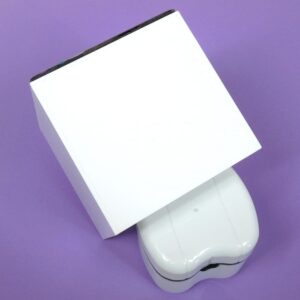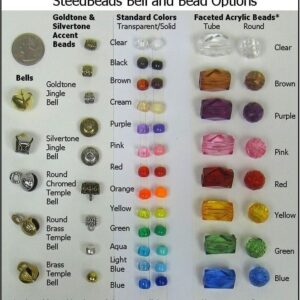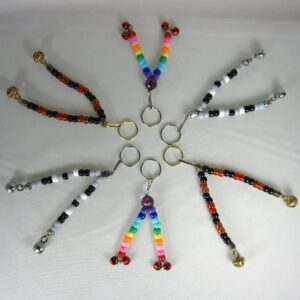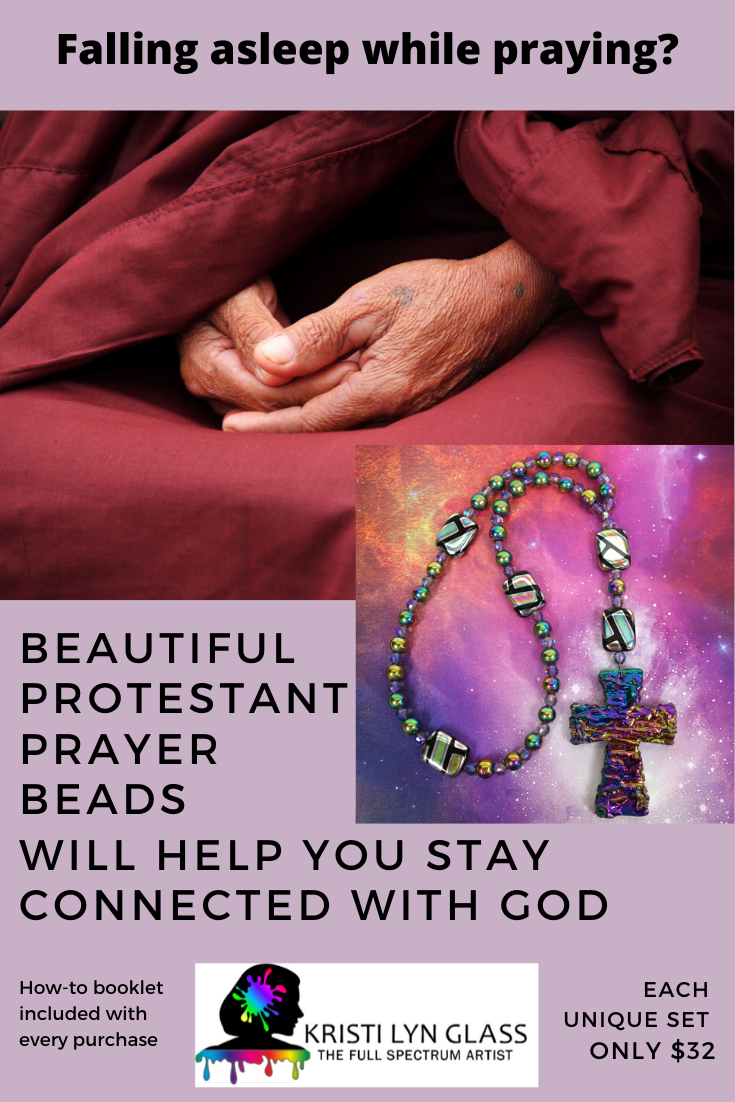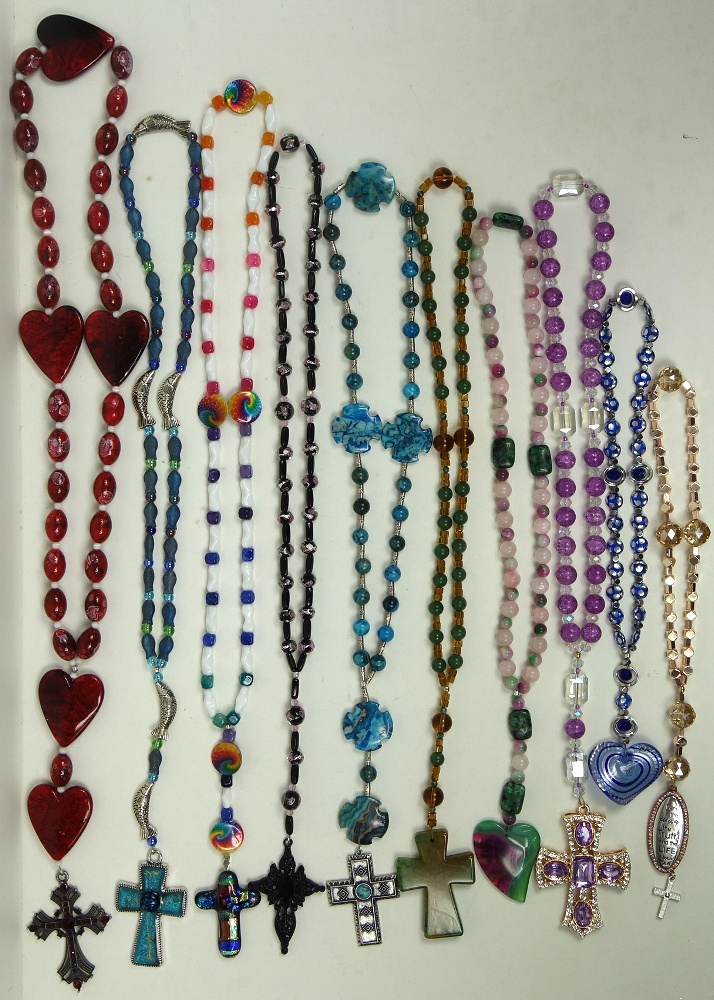Do you have trouble starting to pray? Once you start praying, do you find your mind drifting to other things? If you pray at bedtime, do you fall asleep before you say “Amen”?
When Catholics pray with a rosary, they have a single set prayer that everyone uses. It has a ritualistic beginning, middle, and end. In contrast, Protestants use a wide variety of free-form prayer styles and routines. This presents the dilemmas of how to start praying, what to pray for, how to keep focused on praying, and when to end a prayer session. When have we prayed “enough” to meet our desired need? When we have remembered everything and everyone we wanted to pray for?
Protestants may take a cue from Catholics by also using prayer beads to organize and structure their prayer time. Since their invention the 1980s, Protestant (Anglican) Prayer Beads have rapidly grown in popularity among Protestant Christians of all ages to enhance their contemplative prayer and connection with God. Rev. Lynn Bauman, guided by the prayerful research and practice of a contemplative prayer group, created the thirty-three-bead design inspired by the Orthodox Jesus Prayer Rope and the Roman Catholic Rosary.
How I Fit In
I’ve been creating Protestant prayer beads since 2013 when I wrote the Anglican Prayer Beads instruction booklet that accompanies each set I sell. This 16-page booklet includes the history, symbolism, and layout of the beads as well as nine sample prayers. It’s the perfect how-to starter for anyone wanting to try using Protestant prayer beads to organize his or her prayer time and more efficiently connect with God during prayer. I describe my favorite “Four-Part Prayer” from this booklet later in this post.
The prayer beads I create come in regular or necklace lengths. I also make shorter versions called Chaplets that may be worn as bracelets, attached to many things, or kept in a purse or pocket for mobile use. Shown below is my latest batch of prayer beads.
I recently posted these for sale on my website. All are necklace length except the two on the right.
My Favorite Prayer
Of all the prayers in my instruction booklet, my favorite is the Four-Part Prayer. I like it best because it neatly divides my prayers into four types: Adoration, Thanks, Forgiveness, and Intercession. Protestant Prayer beads contain four sections of seven Week beads. Sections are divided by larger Cruciform beads. I use each of a section’s seven Week beads for a specific prayer or category of that section’s type.
- In the Adoration section, I cite reasons why I adore God. For example, I adore God because I am complete in Christ, I am free from condemnation, I cannot be separated from God, I am confident that God will complete the works he has planned for me, I know everything God does is in our best interests, etc. As I make each statement, I confirm the conviction in my mind and possibly think of related current events that provide evidence of these convictions.
- In the Thanks section, I give regular thanks for some things and leave some beads available for thanks for things that currently come to mind.
- In the Forgiveness section, I ask for forgiveness for various types of personal sins I often want forgiven. For example, I ask for forgiveness of my sins of omission, pride, gluttony, not being impeccable with my word, making assumptions, taking things personally, and not taking good physical care of my body. I assign each of these to a bead in the Forgiveness section. As I contemplate each type of sin, current examples may come to mind and demand my attention and prayer.
- In the Intercession section, I pray for people, situations, and things. I assign categories to some beads in this section. These include prayers for encouragement/support, healing, comfort for those in mourning, and the best possible outcomes for our country and the world. As I come to each bead, I pray for specific people in need of its type of prayer. I use the few extra beads in this section to include other prayers for intercession that may come to mind, such as help with my current personal endeavors.
I recite the Lord’s Prayer on the next Cruciform bead. It neatly covers any prayers I may have overlooked.
The smaller bead between the last two Cruciform beads (on the way from and to the cross or pendant) I call the Resurrection/Listening bead.
- On the way from the cross or pendant toward the loop of beads, I give thanks at this bead for Jesus’ resurrection, leading us to eternal life.
- On the way toward the cross or pendant from the loop of beads, I use this smaller bead as a Listening bead. When I come to it, I pause and listen to and contemplate whatever God wants to say to me at that time.
Then I move to the last Cruciform bead saying, “In Jesus’ name I pray.” (At this bead at the beginning of my prayer session, I say, “Lord be with me as I pray.”)
At the end of my prayer time, coming to the cross or other pendant on the “tail” of the prayer beads always invokes a satisfied “Amen.” (At the cross or pendant at the beginning of my prayer session, I say. “I pray in the name of the Father, Son, and Holy Ghost.”)
Is This For You?
Using this Four-Part Prayer, one can easily organize one’s prayers and avoid a prayer session focused on purely “Gimme, gimme, gimme type prayers.” I appreciate this easy way to balance and work through my four types of prayers while maintaining my focus and not falling asleep. Maybe you will, too! Whenever I pick up my prayer beads, I am immediately drawn into my prayer routine, and the beads look beautiful and feel delightfully comforting in my hands as I pray.
Has this post inspired you to give Protestant prayer beads a try? Please leave a comment with your thoughts on this prospect or your current experiences using prayer beads.





